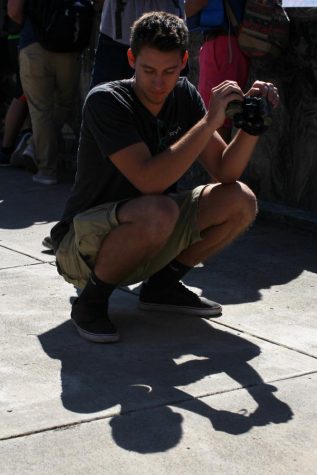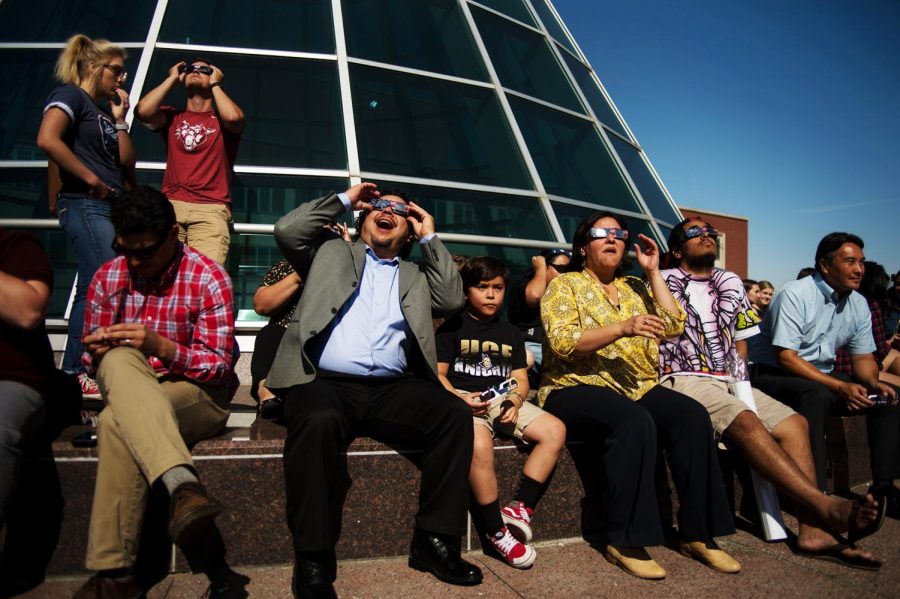Students skip class to witness solar eclipse
Solar eclipse glasses were nearly sold out in Pullman
August 21, 2017
Scattered around the Jewett Observatory, dozens of students, faculty and Pullman families
wearing $3 solar shades gathered to view a near-total eclipse.
Inside the observatory, physics and astronomy graduate student Jerred Jesse showed a projection of the moon covering the sun and the little sun spots that appeared. He said though we experience eclipses every 18 months, most are over oceans and not visible.

Daily Evergreen photographer Ryan Pugh uses binoculars to project the solar eclispe on top of the Holland Terell Library.
He said he had a chance to see a partial eclipse when he was a kid, but it was a cloudy day.
“I’ve been waiting more than 20 years for this,” he said.
Besides the spectacle of eclipses, Jesse said past versions have offered great scientific value. In the 1800s, scientists studied the corona of a total solar eclipse and were able to find the element helium. Scientists also studied one in the 1940s to test Einstein’s theory of general relativity.
The 12-inch telescope, built in the 1890s, showed the projection using a makeshift contraption specifically made for the event by associate physics professor Guy Worthey using a trash bag, tape, funnel, Seahawks beer cozy and a cone collar from the WSU Veterinary School.
Outside, veterinary medicine staff member Hector Manzano said the Pullman eclipse reminded him of one he witnessed as a child in Mexico City. Here in Pullman, only 95 percent the eclipse was visible, but Manzano was still impressed.
“Wow, it looks like a boomerang!” he said. “A fire boomerang!”
By 9:45 a.m., a crowd had also gathered across campus on top of Holland Library as volunteers passed out glasses, as well as pinhole cards and Ritz crackers to project tiny images of the eclipse on the concrete. A solar projection viewer, made by WSU Technical Services, displayed the shadow of the moon on a whiteboard.
One volunteer, shock physics graduate student Maren Mossman, said even though the eclipse is 95 percent in Pullman, the effect is comparatively drastic in its full form, with a 15 degree temperature drop and animals starting their nighttime routines.
“The stars would come out and you could see the full corona,” Mossman said, “and birds would think that it was time to go to sleep.”
As students walked to their 10 a.m. classes, Mossman shouted through her microphone, encouraging them to attend the event.
“If you’re heading to class now, don’t go to class now,” Mossman said. “Stay for the solar eclipse!”
Many more students emerged as the eclipse reached its maximum, bringing viewing devices crafted from cereal, shoe and amazon boxes after all the glasses had sold out.
Some students, such as junior political science major JoMir Moreno, were not entirely impressed with the eclipse.
“I was expecting a little bit more,” Moreno said. “I think it was too hyped up, but it was still pretty cool. I’m glad I came, I can say that I was here.”









